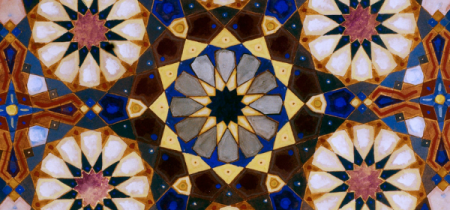Courses
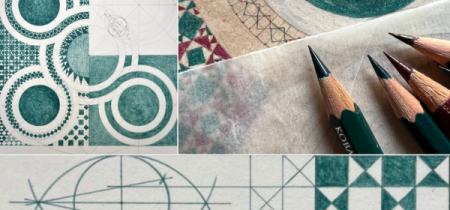 The Geometry of Cosmatesque Ornament
Cosmatesque ornament is a style of geometric inlay stonework from Medieval Italy. A form of opus sectile, this technique uses coloured stone or glass, cut into small geometric...
The Geometry of Cosmatesque Ornament
Cosmatesque ornament is a style of geometric inlay stonework from Medieval Italy. A form of opus sectile, this technique uses coloured stone or glass, cut into small geometric...
Cosmatesque ornament is a style of geometric inlay stonework from Medieval Italy. A form of opus sectile, this technique uses coloured stone or glass, cut into small geometric shapes, to form elaborate patterns. Primarily used for church floors, the Cosmatesque ornament also decorated columns, walls and immovable church furnishings. Named after the Cosmati family of craftsmen, the style is mainly found in and around Rome, but a notable example outside of Italy is the marble floor of Westminster Abbey.
This course will take inspiration from the tutor's ongoing on-site research at different locations in the Eternal City and in its vicinity. During the course, students will learn about the different components of a Cosmatesque pavement and acquire skills necessary to analyse and draw the various parts and their infilling patterns with the use of a compass and ruler.
The course will also include a brief discussion on the historical background of Cosmatesque ornaments, along with a summary of their symbolism in the context in which they were created. It will examine materials used to construct the pavements and the possible materials an artist can use today to make Cosmatesque geometric art. Additionally, the course will look at how these pavements currently function within the churches of Rome.
Book now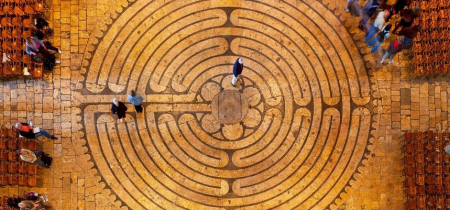 Labyrinth - The Journey Inwards for Transformation and Rebirth
Labyrinths are geometric patterns that mark out a journey - a journey of the soul to a central place.
They contain a pathway that runs from the periphery of the pattern to its...
Labyrinth - The Journey Inwards for Transformation and Rebirth
Labyrinths are geometric patterns that mark out a journey - a journey of the soul to a central place.
They contain a pathway that runs from the periphery of the pattern to its...
Labyrinths are geometric patterns that mark out a journey - a journey of the soul to a central place.
They contain a pathway that runs from the periphery of the pattern to its centre which twists and turns in many different directions. The reaching of the centre is then followed by a return back outwards along the same path.
Labyrinths have a very long history and are found in many different cultures - from the ancient world to medieval Christendom and all the way up to the current time in which they are experiencing a significant resurgence.
In this practical drawing course we will draw various different labyrinths and consider their history and symbolic meanings.
Book now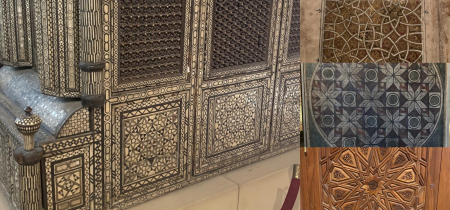 Coptic Geometry
In this course we will explore the geometry of the Christian Tradition in Egypt. These motifs appear in monasteries, churches, and manuscripts throughout the centuries.
We will...
Coptic Geometry
In this course we will explore the geometry of the Christian Tradition in Egypt. These motifs appear in monasteries, churches, and manuscripts throughout the centuries.
We will...
In this course we will explore the geometry of the Christian Tradition in Egypt. These motifs appear in monasteries, churches, and manuscripts throughout the centuries.
We will analyze and draw these patterns from St. Apollinaris monastery, St. Catherine monastery, and manuscripts from the Coptic Museum in Cairo.
Book now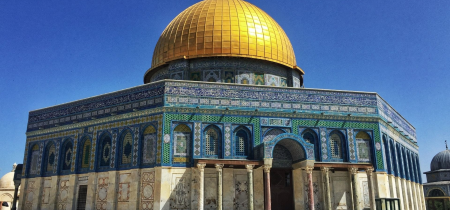 Patterns from the Al Aqsa Mosque
Explore geometric patterns from the Al-Aqsa compound in Jerusalem. This site is unique in that construction of its various buildings spanned a number of Islamic caliphates,...
Patterns from the Al Aqsa Mosque
Explore geometric patterns from the Al-Aqsa compound in Jerusalem. This site is unique in that construction of its various buildings spanned a number of Islamic caliphates,...
Explore geometric patterns from the Al-Aqsa compound in Jerusalem. This site is unique in that construction of its various buildings spanned a number of Islamic caliphates, including the Umayyad, Mamluk and Ottoman periods. Craftspeople and artisans not only applied geometric patterns across time, but also a variety of materials, including woodwork, marble, glass, and stucco carving. This course gives students an understanding of how the fundamentals of Islamic geometry were used to create a beautiful place of worship, across different buildings and time periods. We will look at how patterns from the same family are expressed in different ways as stars or rosettes and also how patterns from different Islamic periods share the same construction.
Book now

